
DSB, an abbreviation of Danske Statsbaner, is the largest Danish train operating company, and the largest in Scandinavia. While DSB is responsible for passenger train operation on most of the Danish railways, goods transport and railway maintenance are outside its scope. DSB runs a commuter rail system, called the S-train, in the area around the Danish capital, Copenhagen, that connects the different areas and suburbs in the greater metropolitan area. Between 2010 and 2017, DSB operated trains in Sweden.
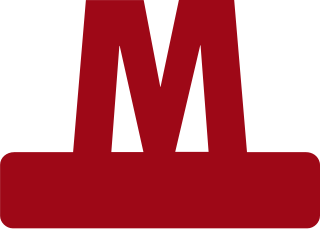
The Copenhagen Metro is a 24/7 light rapid transit system in Copenhagen, Denmark, serving the municipalities of Copenhagen, Frederiksberg, and Tårnby.

The Copenhagen S-train, the S-train of Copenhagen, Denmark, is a key part of public transport in the city. It is a hybrid urban-suburban rail serving most of the Copenhagen urban area, and is analogous to the S-Bahn systems of Berlin, Vienna and Hamburg. The trains connect the Copenhagen inner city with Hillerød, Klampenborg, Frederikssund, Farum, Høje-Taastrup and Køge. There are 170 km (110 mi) of double track with 86 S-train stations, of which eight are in neighbouring towns outside greater Copenhagen.

The rail transport system in Denmark consists of 2,633 km of railway lines, of which the Copenhagen S-train network, the main line Helsingør-Copenhagen-Padborg, and the Lunderskov-Esbjerg line are electrified. Most traffic is passenger trains, although there is considerable transit goods traffic between Sweden and Germany.
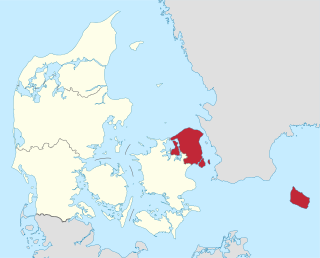
The Capital Region of Denmark is the easternmost administrative region of Denmark, and contains Copenhagen, the national capital.

Vestsjællands Lokalbaner A/S was a Danish railway company. It existed from 2003 to 2009.

The Gribskov Line or the Gribskov Railway is a local passenger railway line in North Zealand north of Copenhagen, Denmark.
Hovedstadens Lokalbaner is a Danish company that owns the trains and tracks of several local railways around Copenhagen: Frederiksværkbanen, Gribskovbanen, Hornbækbanen, Lille Nord, Nærumbanen and Østbanen. It leases trains and trackage rights to the operating companies DSB S-tog and Lokalbanen.

The Skagen railway line is a 39.7 km (24.7 mi) long standard gauge single track railway line between Skagen and Frederikshavn in Vendsyssel, Denmark. The railway links the fishing port and seaside resort of Skagen with the Danish rail network.
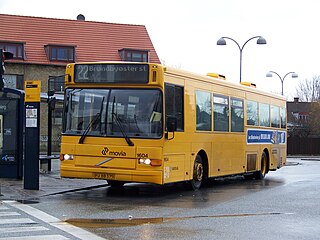
Trafikselskabet Movia is the public transport agency that is responsible for buses and certain local railways in Copenhagen and the part of Denmark east of the Great Belt, covering the regions Sjælland and Hovedstaden, except for Bornholm, which is a 100% owner of BAT, formerly, before 1 January 2003, transit agency Bornholms Amts Trafikselskab. It does not own any buses and trains itself, but pays subcontractors to run them. It is a part owner of train company Lokaltog. It has an integrated fare system in collaboration with the Copenhagen metro and DSB, which means that the same tickets are valid on all buses and trains.

The Copenhagen metropolitan area or Metropolitan Copenhagen is a large commuter belt surrounding Copenhagen, the capital of Denmark. It includes Copenhagen Municipality, Frederiksberg and surrounding municipalities stretching westward across Zealand. It has a densely-populated core surrounded by suburban settlements.

The RegioSprinter is a German diesel railcar built by Siemens-Duewag for rapid regional railway services. Originally the RegioSprinter was designated as a Regional Combustion-engined Railbus by Duewag.

Regionstog A/S was a Danish railway company responsible for train operation on three private railway lines in Region Zealand: the Tølløse Line, the East Line and the Lolland Line. It was established in 2009 when Vestsjællands Lokalbaner A/S, Østbanen and Lollandsbanen A/S where merged. It merged with Lokalbanen A/S in 2015 to form the railway company Lokaltog A/S. Regionstog had administrative offices in Maribo and Holbæk.
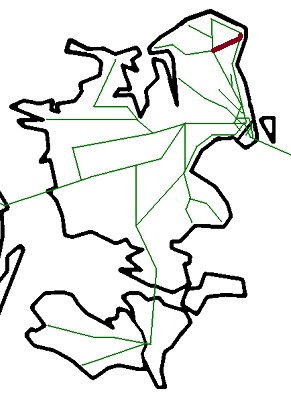
The Little North Line is a local railway line which runs between Hillerød and Helsingør in North Zealand north of Copenhagen, Denmark. The most important town along the route is Fredensborg, home to Fredensborg Palace, one of the Danish Royal Family's two main residences.

The Hornbæk Line is a 24.5 km (15.2 mi) long standard gauge single track railway line north of Copenhagen, Denmark. It runs along the coast of Øresund between Helsingør and Gilleleje, through an area with many holiday homes. The name Hornbækbanen refers to the town Hornbæk about halfway between Helsingør and Gilleleje.
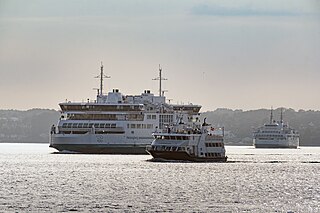
The Helsingør–Helsingborg ferry route is a shipping route connecting Helsingør (Elsinore), Denmark and Helsingborg, Sweden across the northern, and narrowest part of the Øresund. Due to the short distance, which is less than 3 nautical miles, is it one of the world's busiest international car ferry routes, with around 70 daily departures from each harbour. The oldest-known written mention of the route dates to the German traveller Adam of Bremen in the 11th century, but it has likely been in use much longer. Before 1658, the route was a domestic Danish route. For several centuries, the route has been run regularly by various Danish shipping lines. Its significance grew during the 1950s, but since the inauguration of the Øresund Bridge in 2000, at the southern end of the Øresund, it has lost some significance but remains as one of the world's most important ferry routes, particularly as a cheaper alternative to the bridge tolls. Since 1952, passports have not been required for citizens of the Nordic Passport Union countries. Since 2001, when both countries became members of the Schengen Area, passports are not needed for anyone.
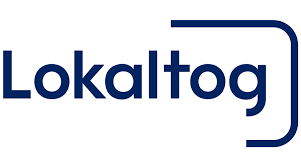
Lokaltog A/S is a Danish railway company responsible for train operation and related passenger services on nine local railways on the islands of Zealand, Lolland and Falster in Denmark. The company was formed on 1 July 2015 as a merger of Lokalbanen A/S and Regionstog A/S. Movia owns a part of Lokaltog, whereas buses are owned by companies, subcontractors, that are paid by this transit agency to drive according to contract.

The Frederiksværk Line is a 39.0 km (24.2 mi) long standard gauge single track local passenger railway line in North Zealand, Denmark. It runs between Hillerød and Hundested. The name Frederiksværkbanen refers to the town Frederiksværk between Hillerød and Hundested.
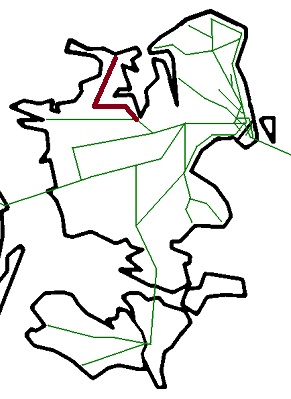
The Holbæk Line is a 49.4 km (30.7 mi) long standard gauge single track local passenger railway line linking Holbæk with the town of Nykøbing Sjælland in the northwestern part of the island of Zealand some fifty km west of Copenhagen, Denmark. It takes its name after the Odsherred peninsula. Train services on the Odsherred Line are operated by the railway company Lokaltog.

The Tølløse Line (previously Høng-Tølløse Jernbane is a 50.8 km long standard gauge single track local passenger railway line between Tølløse and Slagelse in the western part of the island of Zealand, Denmark. It runs from Tølløse station on the Northwest Line to Slagelse station on the Copenhagen–Fredericia/Taulov Line, through a mainly rural area.



















